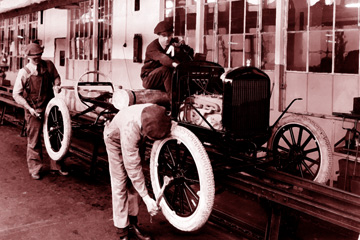
Home > Essays > The labor movement and artists

By Alonso del Arte, September 7, 2015
With Labor Day coming and going, we'll save a few bucks on appliances from Sears. Maybe we will also remember that labor unions are responsible for many nice things we take for granted, like the weekend, overtime pay, workplace safety, Social Security and Medicare, etc.
When unions thrive, so does the middle class, and the rich are still rich but not obscenely rich.
With artists so eager to have social commentary in their artwork these days, it is kind of surprising to see them for the most part be so quiet about the importance of labor in our lives.
They seem to be much more interested in commenting on race and gender identity, and speaking out against war. It makes for more compelling artist statements, I suppose. They might not realize the extent to which their artistic endeavors have been enabled by strong labor unions.
Consider for one thing the 40-hour work week and the weekend. Just eight hours at a humdrum day job in retail or at a restaurant can leave an artist without energy to go into the studio and work on a new painting.
Imagine if that same artist had a 60-hour work week at a manufacturing plant: his artistic ambitions might have to be put on hold. With the meager paycheck those 60-hour work weeks gave (even after adjusting for inflation), it is doubtful he would have been able to afford materials like canvases and paints.
I'm not calling on artists to start churning out a bunch of paintings on the theme of labor. What I am asking artists in metro Detroit to do is this: go to the DIA, meditate upon Diego Rivera's Detroit Industry fresco.
Also think about how your experience has been enabled by the security guards, the visitor services representatives, the cooks, the janitors, etc. If you have volunteered at the DIA, those employees have been of vital importance to your success as a volunteer.
And then call your county commissioner and tell him or her that you want a raise for the DIA's humblest employees. Let's say the DIA has exactly 400 employees. If the next director of the DIA decides to show some moral leadership by example and accept a salary of just $200K (still well above the poverty line and more than what is allotted to pay the Michigan governor), the lower level employees could be given a raise of roughly $800 each, which might not sound like much but is more than the Bush tax refunds of 2001.